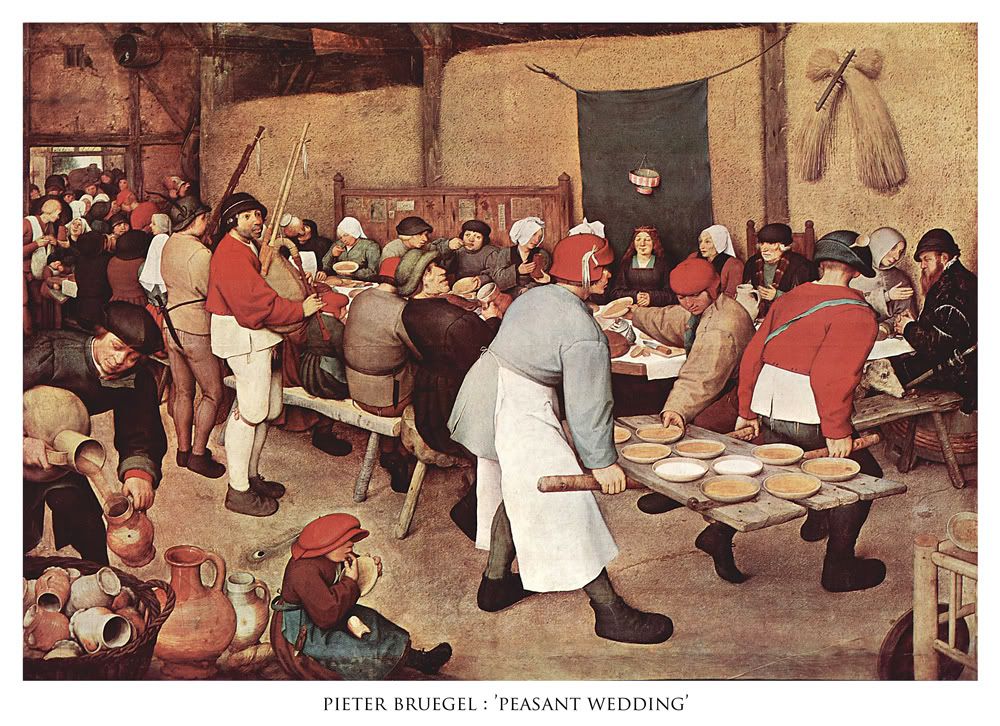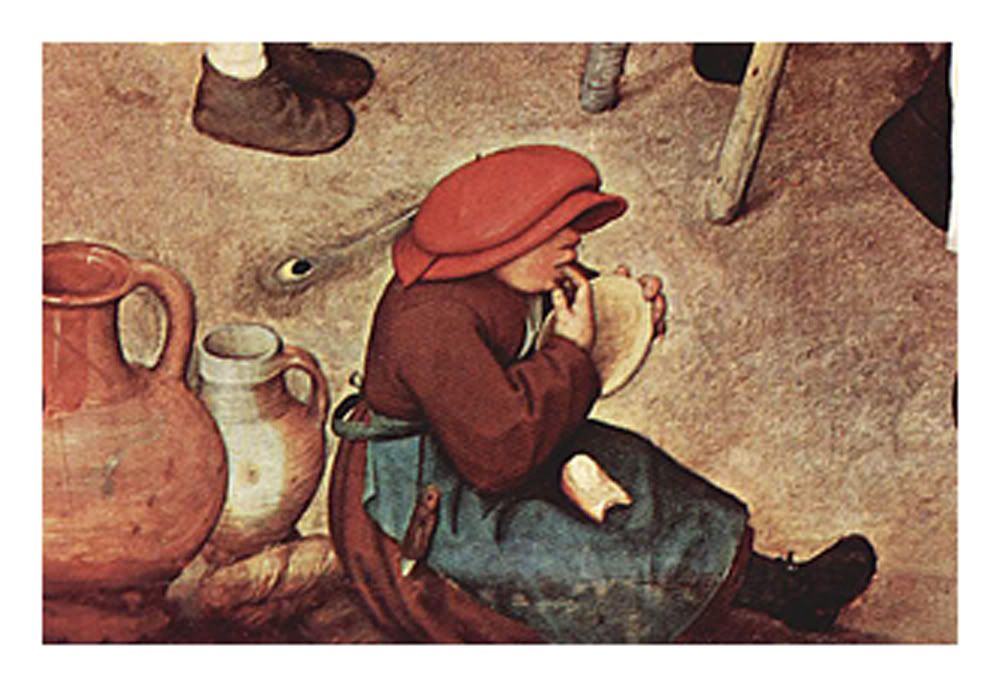Pieter Bruegel the Elder (1525-69) was the greatest of the Flemish sixteenth century masters. His 'kind' of paintings were scenes from peasant life. He painted peasants going about their daily lives: peasants merrymaking, peasants feasting, peasants working and peasants frolicking. It was a custom at the time to regard the country yokel as a figure of fun. I don't think Bruegel did this because of any inherent snobbery but more because in the rustic peasant; in the country bumpkin, man and nature is less disguised and covered up. There is no veneer of artificiality and convention that you see in the affected manners of gentlemen and gentlewomen of the cities. Thus, when they wanted to show up the folly of humankind artists like Bruegel often took low life as their subject. And in those days you didn't get as low-life as peasant life!

One of the most perfect (and one of my favourite) of Bruegel's human comedy pictures is his famous painting of a country wedding (see above). Like most pictures it loses a great deal in reproduction, so I've endeavoured to show close-up details of it below to illustrate my points. The feast takes place in a barn and you can see the straw stacked up high in background. The bride sits in front of a piece of blue cloth, with a kind of crown suspended over her head. She sits quietly, with folded hands and a grin of utter contentment on her stupid face (see below).
[close-up detail No.1]
Look at her face in the close-up. Her cheeks are flushed pink, her face is covered in scabs and her hands and nails are filthy, yet look how happy and content she looks! Presumably the women to her right and the old man next to her are her parents. And to her left, the man farther back, who is so busy gobbling his food with his spoon jammed to his face, may be the bridegroom. Look at him. What a comic figure he cuts! Most of the people at the table are concentrated in eating and drinking. In the left hand corner of the main picture you can see a man pouring beer into jugs - while the two men with white aprons are carrying ten more platefuls of pie or porridge on an improvised tray. One of the guests below the bride passes the plates to the table. But there is so much more going on.
There is the crowd in the background to the left trying to get in. There seems to be a rush to grab some food before it runs out. I have seen such scenes myself at village weddings before. There are the musicians, one of them with a pathetic, forlorn and hungry look in his eyes, as he watches the food being carried past: there are the outsiders at the corner of the table, a friar and the magistrate, engrossed in their own conversation; and then my favourite detail is shown below:
[close-up detail No.2]
The child in the foreground, who has got hold of a plate, and a feathered cap much too large for its little head, and who is completely absorbed in licking the delicious food - wiping the plate clean with its little finger - a picture of innocent greed. I love this picture. To me it represents our true natures. Yes we're greedy. Yes we're filthy. Yes we're ignorant. But encapsulated within that image of the innocent greedy child and the wedding guests so absorbed in their food is the human condition of simple rustic folk. This painting makes me want to embrace mankind. It makes me want to give mankind a big wet kiss on the cheeks and say: 'I love you all. Be you filthy. Be you greedy. Be you bone-idle. Be you stupid. Be you ignorant. Be you whatever you may be - I love you all!'

